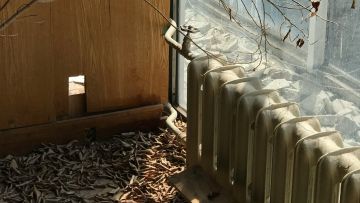You're walking around your house, maybe with a cup of tea and a cookie in hand, and you notice it — a crack, a loose panel, maybe even a mystery dent in your siding. Your first instinct? Probably to grab your phone and call a contractor. We've all been there. But not every siding issue needs a full crew and a hefty invoice.
In fact, a lot of homeowners instantly Google "siding repair NJ" the moment they spot something wrong. And hey, sometimes that's the right move. But before you commit to bringing in the pros, it's worth knowing that some problems — especially the smaller ones — can be fixed with just a few tools and a little patience.
That's the beauty of the DIY mindset. It's not about cutting corners. It's about knowing when you can handle it yourself — and when you really shouldn't. The trick is understanding the difference. Let's walk through five common siding issues that you actually can tackle on your own (plus how to do it right).
What You Need in Your DIY Toolkit Before We Start
Before we jump into the actual fixes, make sure you're set up for success. Here's what you should have on hand:
-
Pry bar or siding removal tool
-
Exterior-grade caulk
-
Utility knife
-
Hammer and galvanized nails
-
Caulking gun
-
Heat gun (for vinyl)
-
Sandpaper or sanding block
-
Matching exterior paint or touch-up kit
-
Cleaning solution and sponge
-
Safety gloves and goggles
Once you've got the basics, you're ready to go.
Problem #1: Those Annoying Loose or Popped Nails
Why This Happens More Often Than You Think
Over time, nails in your siding can start to work themselves loose. It's usually not because of poor installation — more often, it's just natural wear and tear. Changes in weather, seasonal expansion and contraction, or a shifting foundation can all cause nails to pop. It's especially common in older homes, and luckily, it's a problem you can fix yourself.
Your Step-by-Step Fix That Actually Works
Start by carefully removing the loose nail using a pry bar or the claw of a hammer. Once it's out, inspect the hole it left behind. If the hole is too wide to hold a new nail securely, fill it with wood filler or exterior-grade caulk and let it dry.
Next, re-nail the siding just slightly above the original spot using a galvanized siding nail. Make sure not to hammer it in too tightly — your siding panels need a bit of room to move as the temperature changes. Tight nailing can lead to warping or future issues.
Pro Tips to Make It Look Like You Never Had the Problem
To keep the repair looking clean, choose a nail with a head that blends into your siding. If you can't find a perfect match, a small dab of touch-up paint does the trick. Wipe off any excess caulk for a smooth, seamless finish — and your siding will look like nothing ever happened.
Problem #2: Small Cracks That Drive You Crazy
Reading the Crack Code Like a Detective
Cracks in siding are frustrating, but not all of them mean trouble. A small hairline crack in vinyl or fiber cement is usually just cosmetic. However, if you notice it getting longer or it's located near a seam or corner, keep an eye on it — those are areas more prone to stress and moisture issues.
The Right Caulk for the Job
To fix it properly, choose a high-quality, paintable caulk made for outdoor use and rated for your specific siding material. If you're working with vinyl, go for a flexible formula that can expand and contract with temperature changes. For fiber cement or wood, choose a caulk that prioritizes strong adhesion and long-term durability.
Making Your Repair Blend In Seamlessly
Apply the caulk carefully along the crack, then smooth it out with a gloved finger or a finishing tool to keep the line clean. Once it's fully cured, lightly sand the area if needed to remove any texture difference. Finish with a coat of matching exterior paint, and the crack will practically disappear — no one will be able to tell it was ever there.
Problem #3: Faded or Chalky Siding That Looks Tired
Testing Whether Your Siding Just Needs Some TLC
If your siding looks dull, faded, or chalky, it doesn't always mean it's damaged. Try running your hand along the surface. If you're left with a fine, powdery residue, that's a sign of oxidation — a natural process from sun exposure. The good news? It's mostly cosmetic and completely fixable.
The Washing Technique That Actually Works
Start with a simple cleaning solution: mix water with a small amount of vinegar or mild detergent. Using a sponge or a soft-bristle brush, gently scrub the siding. Avoid pressure washers — they can damage the surface or force water behind the panels. Once clean, rinse thoroughly with a garden hose. You'd be surprised how much of that tired look is just grime.
When Fresh Paint Can Work Magic
If cleaning doesn't bring the color back, it might be time for a fresh coat of paint. Use a high-quality exterior paint that's made for your specific siding material. Always apply a primer first, especially if your siding is porous or hasn't been painted before. And don't forget to check the manufacturer's guidelines — painting the wrong way could void your warranty. Done right, a repaint can make your home look brand new.
Problem #4: Minor Dents and Dings from Life Happening
Dents in siding are one of those things that just happen. Maybe it was a stray baseball, a hailstorm, or a bumped lawnmower. The good news is, if you've got vinyl siding, you might be able to fix it with nothing more than a heat gun.
Start by cleaning the area so there's no dirt or debris in the way. Then gently heat the dent using a heat gun — hold it a few inches back to avoid damaging the vinyl. As the material warms up, it becomes flexible. That's your cue to press the dent out from behind or gently massage it flat. Be careful not to overheat it, though. Vinyl can melt or warp if you go too far, and that's a whole different problem.
If you're dealing with wood or fiber cement siding, the approach is a little different. Use an exterior-grade wood filler or patching compound to fill the dent. Once it's dry, sand the surface smooth and touch up with paint that matches your siding.
To make your fix truly invisible, feather the edges with a sanding block and pay close attention to matching the color and finish of your paint. Then take a step back and look. If you can't see the repair, you nailed it.
Problem #5: Loose Panels That Rattle in the Wind
If your siding panels are rattling every time the wind picks up, it's usually a sign that something wasn't installed quite right. Most of the time, it comes down to nails that were placed too tightly, too loosely, or not aligned with the clips properly. It's more of a nuisance than a serious threat, but it's definitely worth fixing before it gets worse.
To re-secure a loose panel, start by using a siding unlock tool — also known as a zip tool — to gently separate the affected section. Once it's loose, check the nail hem for any missing or misplaced fasteners. Use galvanized nails to reattach the panel, making sure to drive them through the designated slots. Leave a small gap between the nail head and the panel so it can expand and contract with temperature changes.
After the panel is nailed in place, snap it back into position carefully. You'll usually find that fixing one loose section improves the overall appearance of the wall — everything just looks tighter and cleaner.
To prevent the issue from coming back, don't reuse old nails and never drive them in too tightly. Always follow the siding manufacturer's installation guidelines if you're unsure. A few small details can make a big difference in how your siding holds up over time.
Red Flags That Mean You Really Do Need to Call Someone
Taking a DIY approach to siding repair is empowering — but even the most capable homeowner needs to know when it's time to hand things over to the pros. There are certain warning signs that go beyond what's safe or practical to fix on your own.
If you spot large holes or missing panels, it's not something a little caulk or touch-up paint can handle. These gaps expose your home to serious water damage and need professional attention right away. The same goes for any signs of mold, rot, or staining underneath the siding — that usually means moisture has already made its way inside.
Warped, buckled, or sagging sections across larger areas are another red flag. That kind of movement often points to structural issues or installation mistakes that require more than just a quick patch. If you keep seeing the same crack reappear — no matter how many times you fix it — that's your home trying to tell you something's wrong on a deeper level.
And finally, if you've already repaired the same spot multiple times and it just won't hold, it's time to step back. A temporary fix can only take you so far before it becomes a frustrating cycle.
The bottom line? DIY has its place, but knowing when to call for expert help is part of being a smart, proactive homeowner. Catching problems early — and knowing your limits — helps you protect your home, your time, and your peace of mind.















